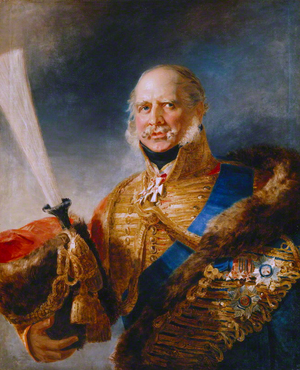| Portrait of the Duke of Cumberland | |
|---|---|
 | |
| Artist | George Dawe |
| Year | c.1828 |
| Type | Oil on canvas, portrait |
| Dimensions | 94 cm× 76 cm(37 in× 30 in) |
| Location | National Portrait Gallery, London |
Portrait of the Duke of Cumberland is an 1828 portrait painting by the English artist George Dawe depicting Ernest Augustus, Duke of Cumberland. [1] [2] The younger brother of the British monarchs George IV and William IV, he became King of Hanover in 1837.